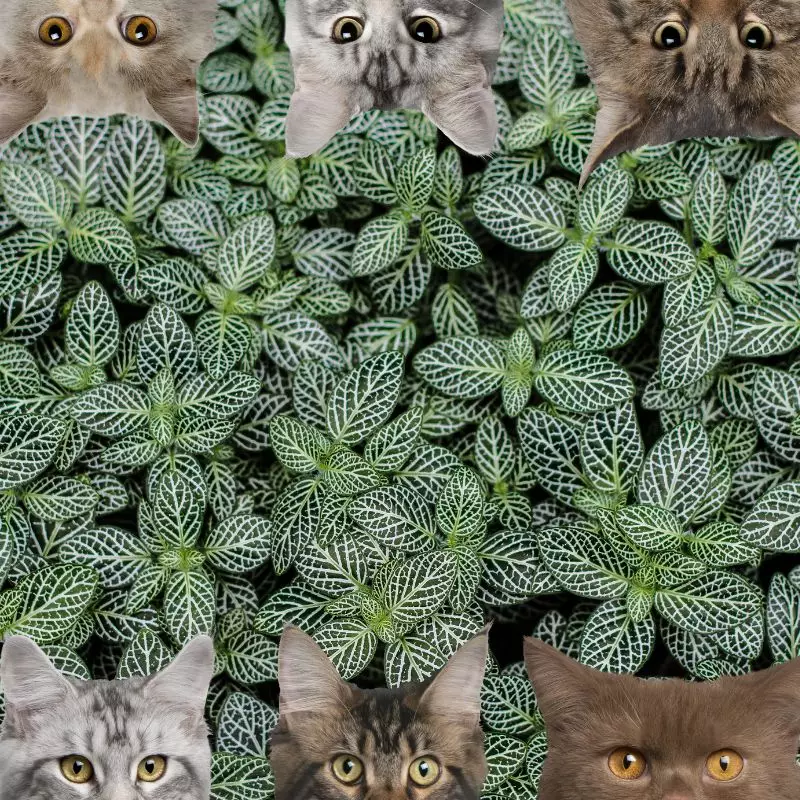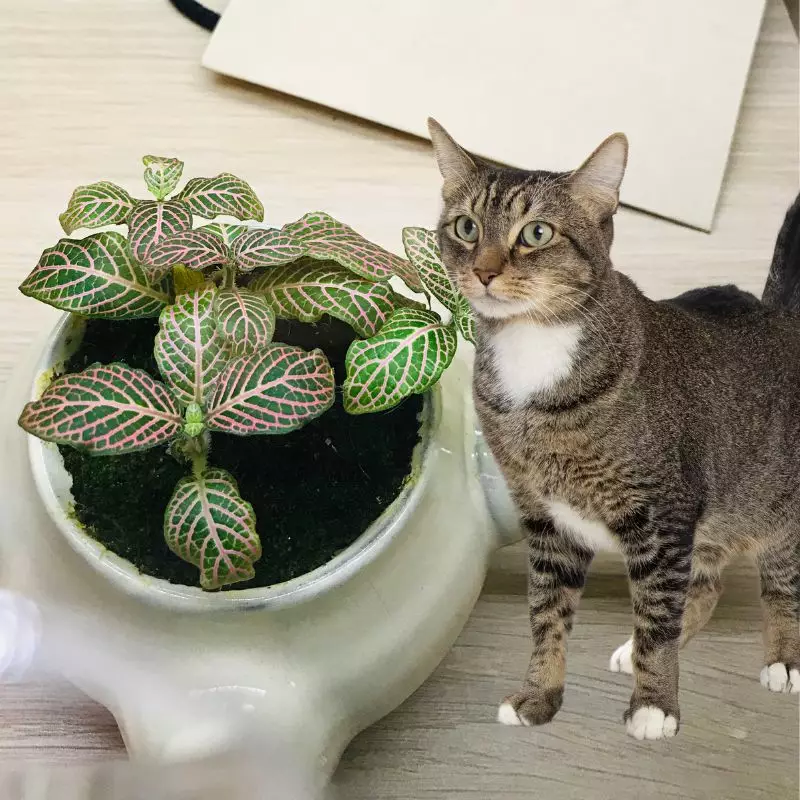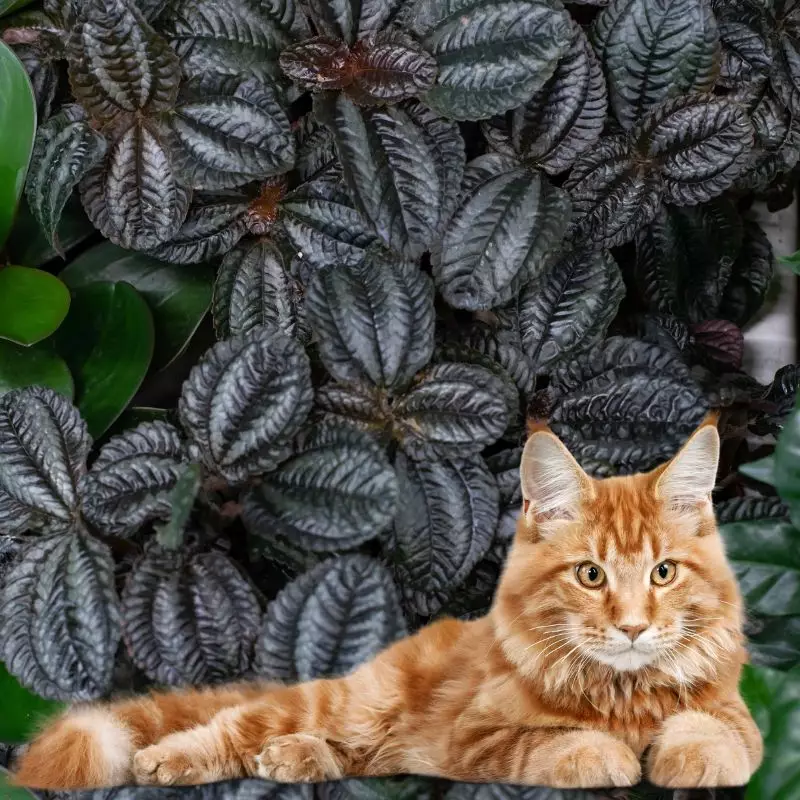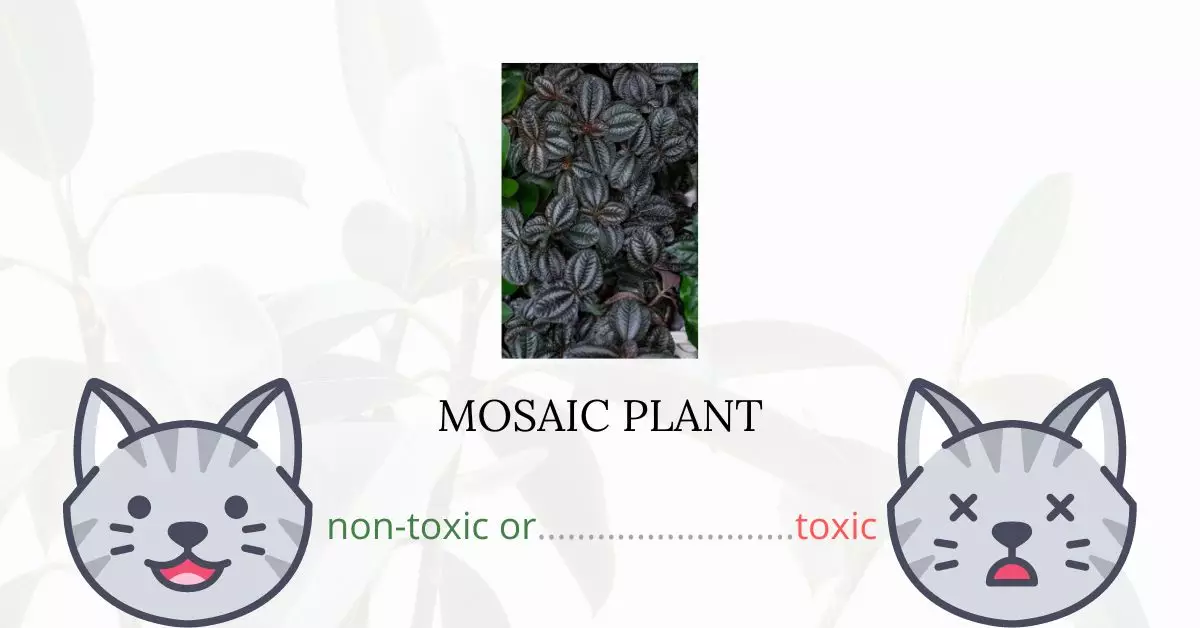First and foremost, the mosaic plant is non-toxic and is generally safe for cats.
This article has been written in collaboration with a team of experienced DVMs (doctors of veterinary medicine). With their expertise, we can provide accurate and up-to-date information regarding the potential risks associated with the mosaic plant and its effects on cats. In addition to our consultation with veterinarians, we’ve also cross-referenced our findings with high-authority websites such as ASPCA and PetMD.
While the leaves of the mosaic plant are sometimes used by humans as a remedy for headaches, muscle soreness, and even as a moderate psychedelic, your feline friend is unlikely to find these uses appealing. However, should they decide to nibble on a few leaves, they should remain unharmed. Rest assured, your pets can safely interact with mosaic plants.
Can Cats Eat Mosaic Plant?

Cats can safely be among mosaic plants. If they happen to eat a few leaves, it won’t hurt them. Cats are carnivores, therefore their digestive systems aren’t built to handle significant amounts of plant matter. Some might get a few small symptoms as a result, which you might mistake for poisoning.
If your cat eats too much plant stuff, they might show some signs of poisoning, but this is due to the way their digestive system is built, not because there are any genuine hazardous effects. Vomiting and diarrhea are the two possible symptoms that are probably the most prevalent.
What is a Mosaic Plant?

Mosaic plant (Bertolonia mosaica) is known for its other names such as Jewel Plant, Mosaic Plant, Nerve Plant, and Silver Nerve. The colorful, velvety, ornamental foliages of these herbaceous plants, which are native to tropical South America, are grown for their beauty. These foliages can be shimmering white with purple, pink with purple, bronze-green with carmine, and lighter midribs, with purple beneath. On short stalks, the oval, coarsely-haired leaves measure 7 cm (3 in) in length. Just above the leaves, the plants repeatedly display clusters of tiny bell-shaped flowers in a variety of colors, including pink, red, yellow, and purple.
This tropical plant is frequently grown inside where it does best in bright to moderate light, neutral to cold ambient temperature, and moderate humidity. This plant is utilized in interiorscapes as a groundcover or as a desktop plant.
Keeping Cats Away From Mosaic Plant

Citrus is one smell that cats really don’t like, and they have a very developed sense of smell. Lemon, lime, orange, or grapefruit peels placed around the house will serve as a temporary deterrent. Since the citrus scent doesn’t linger for very long, you will need to reapply frequently.
Citrus fruits can also be used to polish garden fences or priceless plant pots, but do not leave the fruit on the surface because cats can become ill from its acidity.
Plants to Avoid For Your Cats
If you are a cat owner and unsure if the plants growing in your yard are harmful to your cats, check out this list of toxic plants for cats. You can also check our list of non-toxic plants for cats.





